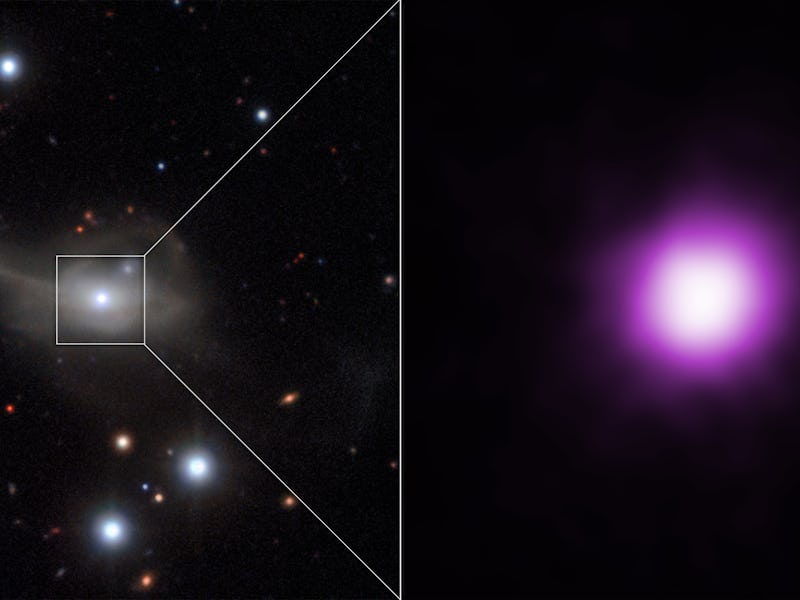A Galaxy Is Fading Because a Black Hole Is Starving to Death
Markarian 1018 is getting dimmer because the black hole at its center is hungry.

The lights are going out in a distant galaxy. In just five years, Markarian 1018 has gone from a brilliant celestial body to a faint, dim speck. That’s insanely fast as far as most things in astrology go, but NASA scientists have figured out what caused the change — a hungry, hungry black hole.
There’s a supermassive black hole at the center of Markarian 1018, which is 607 million light-years away from Earth. Active galactic nuclei, or AGN, as they’re known, tend to be among the brightest objects in the universe, spitting out dazzling radiation while they suck material in. The problem for the Markarian 1018 is that its black hole is starving, so the light output has gone way down.
Uniquely, it’s not the first time that there’s been a light show at Markarian 1018. In the 1980s, the AGN started off dim but then lit up like an alien Christmas tree, before fading again over the course of this decade. Researchers who had been closely following the galaxy were able to determine that it wasn’t going dark due to obscuring gas clouds or because it had eaten an entire star. Instead, researchers used combined data from NASA’s Chandra X-ray Observatory and the Hubble telescope to learn that it was being “starved of infalling material.”
Markarian 1018 as seen by ESO’s Very Large Telescope along with the NASA/ESA Hubble Space Telescope and NASA’s Chandra X-ray Observatory
The AGN’s food supply might’ve been cut off due to “interactions with a second supermassive black hole in the system,” NASA explained on Wednesday. It’s highly likely that Markarian 1018 has two black holes at its core, since it was the result of a collision and merger between two large, ancient galaxies in the first place.
Markarian 1018 has faced dark times before and managed to find a way to shine, so it’s possible that the black hole at its center won’t go hungry forever.
Two papers, one with the first author of Bernd Husemann (previously at ESO and currently at the Max Planck Institute for Astronomy) and the other with Rebecca McElroy (University of Sydney), describing these results appeared in the September 2016 issue of Astronomy & Astrophysics journal.